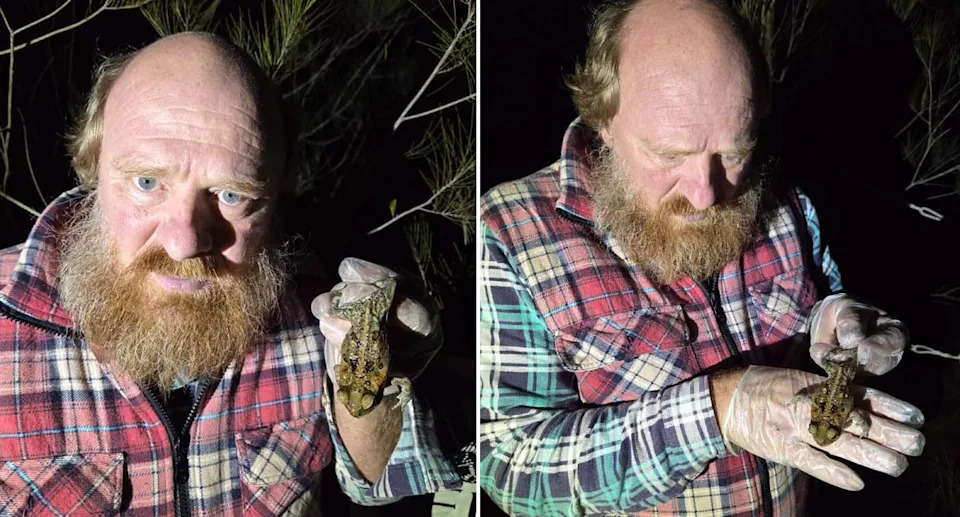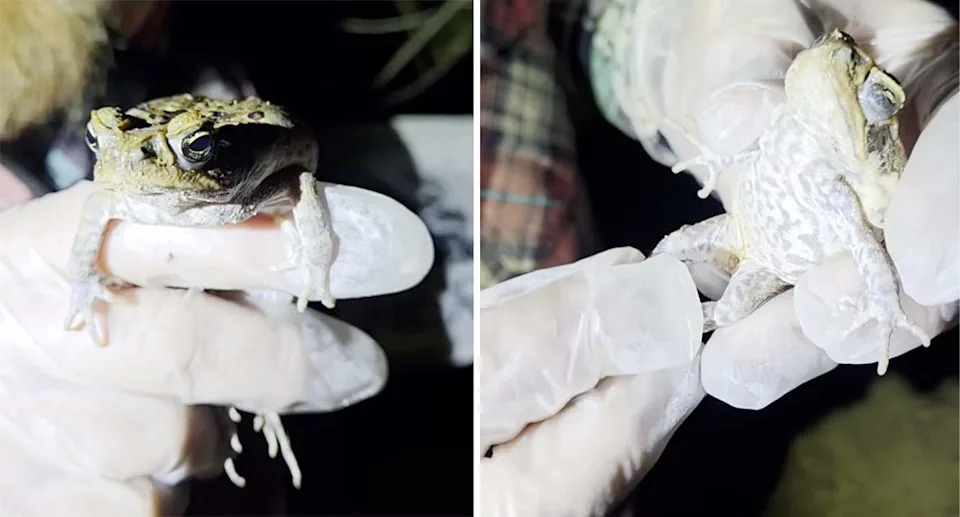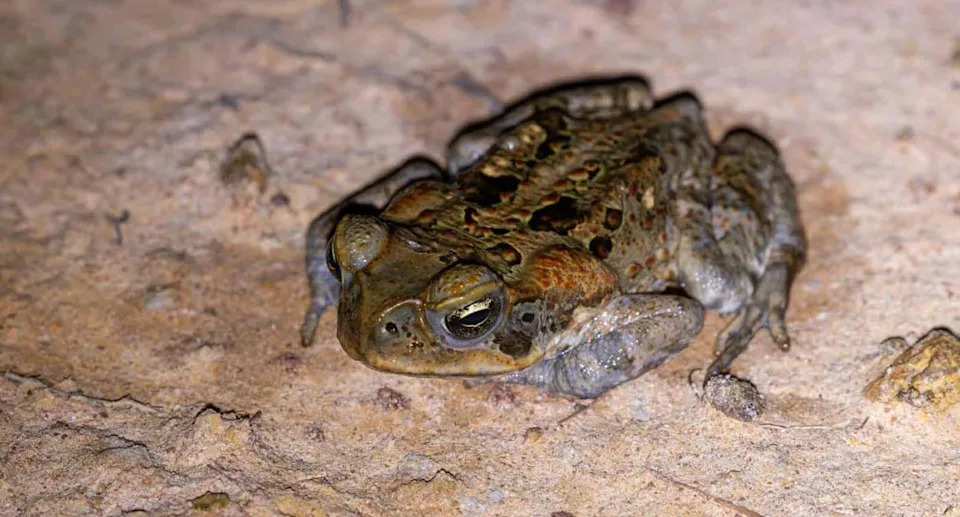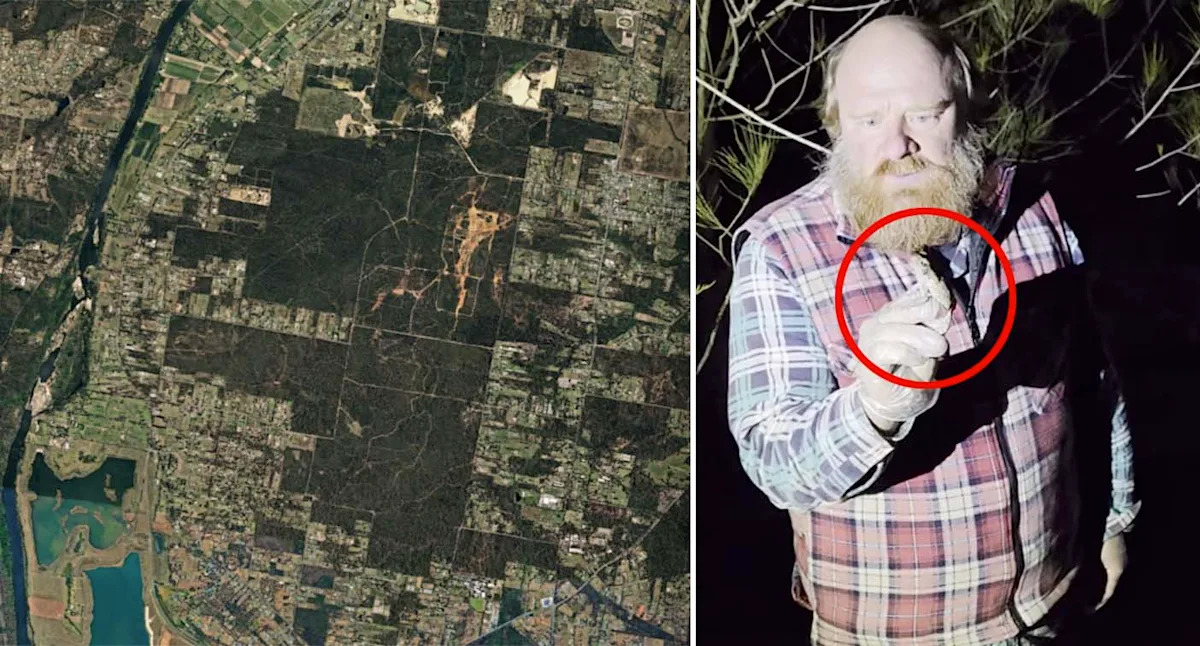Whenever he has a spare evening, Matthew Vella is out in bushland in Sydney’s west conducting field research and surveying the area for frogs, snakes and other reptiles and amphibians. But a recent trip uncovered a more sinister threat hiding under a discarded mattress — a find he described as “concerning”.
Matt documents all species that he sees, and recently had a successful evening documenting nine types of frogs and a yellow-faced whip snake. Then, at 1am, he discovered a cane toad.
The invasive pest is typically found in northern parts of the country, but each year the toads spread further south at a rate of up to 50km per year. The toads are highly toxic and kill native predators that try to eat it, and also compete with native wildlife for food.
Matt has never seen a cane toad in the Penrith area before, and hopes he never will again.
He is the vice president of the Hawkesbury Herpetological Society, a group of like-minded individuals with a passion for reptiles and amphibians. Colin South, the group’s president, said the toads are an “ongoing problem”.

Matt said he hopes to never find another cane toad this far south. Source: Matthew Vella
“They turn up every year in Sutherland and in the northern beaches, and it’s usually that they’re stowaways,” he said, adding that those toads usually die off in the colder winter months.
But the difference with this toad is Matt believes it may have “overwintered” or survived through the winter.
“This one looks like it’s actually been there for a fair while and probably overwintered, which is concerning,” Colin said. “These guys, once they spawn, they can have over 30,000 eggs. Game over, isn’t it?”
Cane toads’ southern march has ‘sped up’ in WA
Dr Carol Booth from the Invasive Species Council agreed that isolated sightings in the Sydney region are not unprecedented, and said the animals usually “hitchhike” south on vehicles or freight. Still, she warned that the threat shouldn’t be underestimated.
“They have spread enormously around WA and they’re still travelling further south, over there,” Dr Booth told Yahoo.
“One of the interesting things as well with cane toads is that in that western front, they’ve actually sped up, and it’s just impossible to stop them.”
Dr Booth commended the NSW government for being proactive in setting up a biosecurity zone in the state’s north and encouraging reports and removals, but warned “constant vigilance and responsiveness” would need to be maintained for “decades”.

Cane toads have a warty back, a bony plate on their head and a black and white pattern on their belly. Source: Matthew Vella
Warning to make sure native frogs aren’t misidentified
While the cane toad in Penrith has raised fears the pest could be making moves further south, Dr Booth, Matt and Colin all warned potential toad hunters to be extra careful to make sure native frogs aren’t being mistaken for cane toads.
Species like the ornate burrowing frog and the smooth toadlet can be easily misidentified.
“The best advice is to take a photo and record the location, and if they’re concerned they should bring it to the attention of the invasive species people and that way it can be properly identified,” Matt said.
If a cane toad is positively identified, contain it and phone the Department of Primary Industries Biosecurity Helpline on 1800 680 244.
Cane toads have two big poison glands on the side of the ears, warty, leathery skin and a bony plate on the top of their head. On their belly, they will have a black and white pattern that also extends down their limbs.

The toad was humanely euthanised at the direction of DPI. Source: Matthew Vella
Do you have a story tip? Email: newsroomau@yahoonews.com.
You can also follow us on Facebook, Instagram, TikTok, Twitter and YouTube.


